A brand new scale for cruisers
The Warrior class were mostly derived from the Duke of Edinburgh (DuE) and Black Prince authorized for the 1902 program and they were the first designed by Philips Watts. At the same time, tonnage restrictions were dropped, and these vessels reached figures well above the previous Devonshire.
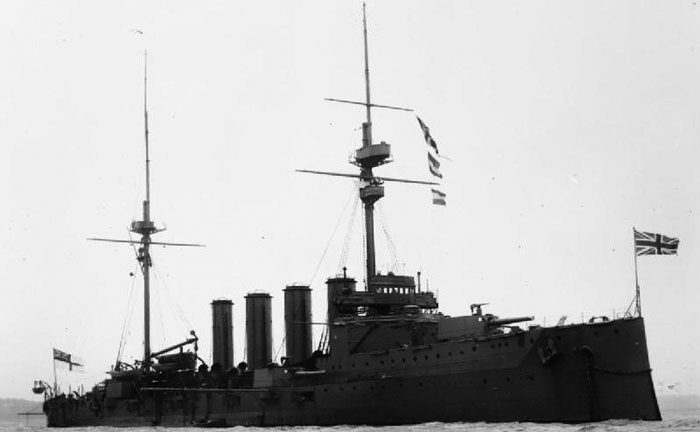
The Duke of Edinburgh class (DoE)
The DoE also returned to a secondary artillery in central battery and barbettes. The six 10 inches (234 mm) guns in single turrets were in a configuration allowing a four guns broadside, three in chase and three in retreat. They were criticized later for the low level of their battery, which was suffering from heavy weather seawater pray. The 6-pdr (47 mm) were judged too weak and not fast enough against torpedo boats. The Warrior class that followed also included HMS Achilles, Cochrane, and Natal. These ships were virtually identical to the first ones in terms of machinery size and displacement, as well as the armament, although its distribution is different: Thus the 6-in guns gave way to 9.5 in (192 mm) in four simple turrets. Accuracy issues in heavy weather disappeared.
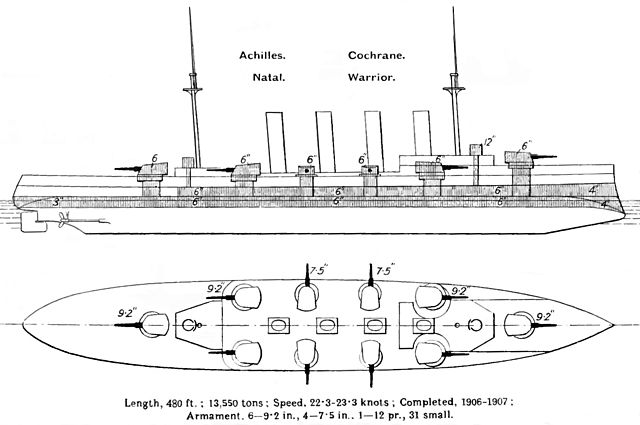
Indeed these four next armoured cruisers of the 1903–1904 Naval Programme, initially simple repeats were modified following complaints from the fleet over the low the secondary armament and the design was modified by order o the Board of Admiralty in late 1903 and early 1904. They were to be lighter, and the secondary armament completely changed to four 7.5-inch (191 mm) guns in single-gun turrets on the upper deck as suggested nu fleet officers. Construction at the time was already started, so these changed cost £250,000 for all four ships, approved on 30 March 1904.
These operational ships in 1907 with some minor modifications of armor. Because of their rearrangements, they had a lowered metacentric point and a much better stability.
There is a full article of the Duke of Edinburgh class, check it out !
Design of the class
Hull and general design
The Warrior-class were rated as 13,550 long tons (13,770 t) in displacement, but lighter even after the change in armament at 13,200–13,350 long tons (13,410–13,560 t) normal, 14,500 long tons (14,700 t) fully loaded. The hull was about the same though, with an overall length of 505 feet 6 inches (154.1 m) (480 ft/146.3 m) between perpendiculars for a 73 feet 6 inches (22.4 m) beam, so a ratio of around 7.20 ratio, deep draught of 26 feet 6 inches (8.1 m) forward, 27 feet 6 inches (8.4 m) aft. They were a bit longer, draftier on the same beam as the previous DoE. Their freeboard, aft of the limited forecastle was quite low still, but their beam was compensating well. The prow was reinforced with the same ram shape as the prevoous class. They had two anchors port, one starboard. The gheneral profile was still a copy-paste of the previous DoE, with a small bridge structure with a lower level open, around the conning tower, supporting light guns, then the wheelhouse and the main enclosed bridge above, with wooden panels, two wings, and the open bridge above, with a Barr& Stoud main telemeter, then the foremast, with on top a projector platform, and two superposed platforms, both acting as spotting tops and covered. The two-part mast had its second leg attached there, supporting the wireless telegraphic cables down to the aft identical but reverse mast.
Like the DoE the intermediate space, on the ain weather deck, aft of the forecastle, was dotted with four equal span tall funnels, with upper walking platforms on both sides, air intakes and access hatches, to leave ample room to manoeuver for the secondary massive turrets. To leave their arc of fire uncumbered, the servive boats, for a complement of 770 officers and ratings, were mostly located aft, at the foot of the aft mast, served with a boom. There were only two pinnaces located under davits, between the frst and second pairs of broadside secondary turrets.
In all, they had no less than 11 boats of various types, pinnaces, yawls and lighters, plus two 45-foot (13.7 m) steam pinnaces that could be armed with main 356 mm torpedoes and act as impromptu torpedo boats for port attacks for example.
There was a triangular aft structure mirroring the forward one, supporting eight small guns, but no aft conning tower. The forecastle did not even had straight section walls, but they were angled inwards to leave the maximum arc of fire inwards for the first pair of deck secondary guns. The aft, chased pair had equally good arc of fire inwards due to the aft structure’s prismatic shape.
In the end, these ships were not only lighter, but they were better destributed and happened to be much steadier gun platforms than their predecessors, with a metacentric height of 2.75 feet (0.8 m). Achilles and Natal became the most accurate ships of the fleet, gaining first prized in 1907 and 1909 respectively. They were also noted on trials and later as very good sea boats, and for naval historian Oscar Parkes “gained the reputation of being the best cruisers we ever built.” This solid design was of course repeated, but with changes, still, for the Minotaur class, the last British armoured cruisers.
Powerplant
They had two 4-cylinder, 4 cycle triple-expansion steam engines, each connected to a single shaft, for a total of 23,500 indicated horsepower (17,520 kW) fed by 19 Yarrow boilers, plus six cylindrical boilers with a working pressure of 225 psi (1,551 kPa; 16 kgf/cm2). The previous DoE had 20 Babcock boilers and six cylindrical boilers. The Warriors were able to reach still the same 23 knots (43 km/h; 26 mph). For range, they carried 2,050 long tons (2,080 t) of coal plus 600 long tons (610 t) of fuel oil, sprayed on coal to increase burn rate. At full capacity that made for 7,960 nautical miles (14,740 km; 9,160 mi) of range, at 10 knots (19 km/h; 12 mph), so enough to cruise down to the Mediterranean if needed.
Armament
Main
Like former ships, the Warriors had also six BL 9.2-inch/45 (234 mm) Mk X guns all in single-gun turret distributed in two centreline fore and aft, and four wing turrets in the corners. The one fore and aft could traverse 285° but the wing turrets only 120° on their respective broadside, mostly due to muzzle blast damage. Elevation was from −5° to +15° and they fired a 380 pounds (172.4 kg) shell at max muzzle velocity of 2,778 ft/s (847 m/s). Range thus was 15,500 yards (14,200 m) at 15 degress, with a rate of fire of three rounds a minute, 100 rounds in store for each.
Secondary
The secondary armament was the most innovatove aspect of the design with four BL 7.5-inch/50 Mk II in single gun turrets also, and arranged amidships. Traverse was 110° on their respective broadside with an elevation between −7.5° to +15° for a range of 14,238 yards (13,019 m), pretty close to the main guns. They had an almost halved volley at 200-pound (90.7 kg) per shell, compensated by a greater rate of fire of about four rounds per minute and a provision of 100 rounds for each. Thus these ships could combined an unprecedented volume of long range heavy fire able to destroy any protected cruiser at a comfortable margin of six heavy guns per broadside. They could find their way on the batte line, and deal for example with slow firing pre-dreadnoughts or chasing down enemy scout cruisers.
Light
In addition they went from twenty-four to twenty six Vickers quick-firing (QF) 3-pounder guns for close defence: Six were located on all on main turret roofs plus eighteen in the superstructure on pivot mounts: Eight forward and eight aft. However they were judged too small to deal with torpedo boats, barely at range and accurate within torpedo range. Their 1.9 in shells weighed 3.3 pounds (1.5 kg) and exited their barrels at 2,587 ft/s (789 m/s) for a max range of 7,550 yards (6,900 m) at +20° elevation. 250 rounds per gun were carried. For simplification there was not lighter gun caliber.
Torpedoes
As usual, these cruisers also mounted three submerged 18-inch torpedo tubes, two on the broadside, one centerline in the prow. For these they carried a total of eighteen Whitehead torpedoes whereas six 14-inch (356 mm) torpedoes were in storage to be used by the two 45-foot (13.7 m) steam pinnaces athat could act as harbour torpedo boats. They could also patrol around their motherships, protected by heavy nets in anchorages.
Protection
The Warrior-class armoured cruisers reproduced the protecttion level of their predecessor.
-The 6-inch (152 mm) waterline armour belt was in Krupp cemented armour, light, flexible yet offering a good protection against rounds of 8-inches.
This belt run over 260 feet (79.2 m) amidships on either side, covering both sides from below the waterline up to the upper deck over 18 feets, between 14 feet 6 inches (4.42 m) above and 4 feet 10 inches (1.47 m) below the waterline.
-The outer belt, Forward of the central citadel enclosed by bulkheads, up to the bow was tapered down to 4 inches (102 mm)
-The aft outer belt to the stern, had a thickness of only 3 inches (76 mm).
-Transverse bulkheads closing the citadel were six inches thick.
-The main gun turrets were protected by 7.5 inches thick plating on the , then 5.5-inch (140 mm) for their sides and back plate, and 2-inch (51 mm) for the roof.
-The secondary gun turrets were given a three-faces frontal arc 8-inch (203 mm) thick side 6-in (152 mm) and same roof thickness.
-Barbettes were protected by six inches of armour over their upper ammunition hoists, thinned down to 3 inches between the armour belt.
-The lower deck was just .75 inches (19 mm) thick, except for a stray of 1.5-inch (38 mm) over the steering gear and 2 inches (51 mm) over the engine cylinders.
-The conning tower had 10 inches (254 mm) thick walls.
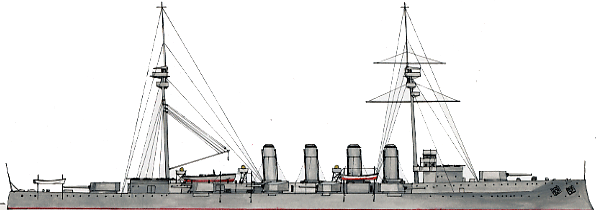
Author’s profile of the Duke of Edinburgh class in 1914.
Warrior class specifications |
|
| Dimensions | 154,03 x 22,40 x 7,62 m |
| Displacement | 13,550 t, 14,900 T FL |
| Propulsion | 2 shafts TE-4 cyl. 25 boilers 23 000 hp. |
| Speed | 23 knots (45 km/h) |
| Range | 6,680 nautical miles (12,370 km) at 10 knots (19 km/h) |
| Armament | 6x 10-in (254mm), 4x 9.5 in (190mm), 23 x 6-pdr (47mm), 3x 18-in (457 mm) TTs |
| Armor | CT 10-in (254mm), battery, belt 6-in (152mm), citadel 4-in (100mm), decks 1-1/2 in (20 mm). |
| Crew | 712 |
Modifications
HMS Cochrane (and her sisters as well likely) had her funnels raised in 1912 to keep free structures of smoke in following wind.
In 1915, the danger of aviaiton urged the mounting of a single Hotchkiss QF 6-pounder high-angle on the quarterdeck (8°/60°) furing a 6-pound (2.7 kg) shell at 1,765 ft/s (538 m/s), 20 rpm up to 10,000 ft (3,000 m) but effective range down to 1,200 yards (1,100 m).
-In 1916, this gun was replaced by the new QF 3 inch 20 cwt high-angle (10°-90°) model firing a 12.5-pound (5.7 kg) shell at 2,500 ft/s (760 m/s), 12–14 rpm at max 23,500 ft (7,200 m).
-1916 also, two Vickers QF 3-pounders, high-angle installed amidships (-5° to +80°), 25 rpm at 15,000 ft (4,600 m) RA 2,000 yards (1,800 m).
-1916 On Cochrane, roodtop light guns removed
-1917: Aftermost 3-pdr superstructure guns removed and on top of the fwd 9.2-in wing turrets: 20x 3-pdr guns.
-1917-18: The foremast was converted to a tripod for an new fire-control director in 1917, fitted August 1918.
The Warrior class
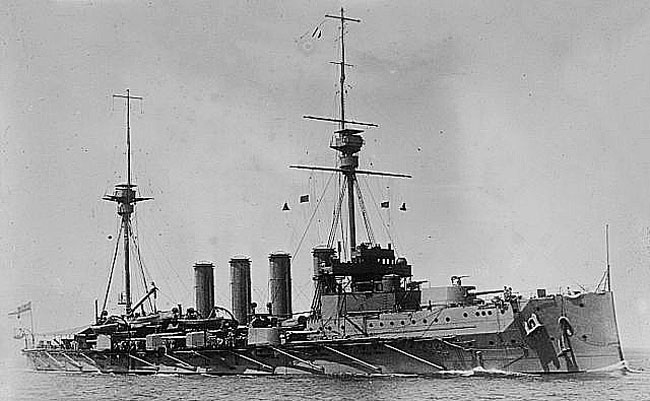
HMS Achilles served in Portsmouth in 1914. A gun explosion had her repaired until June 1916 so she missed the battle of Jutland. After that, she was posted to the Atlantic. She engaged and drove back the merchant Raider “Leopard” in the North Sea on March 16, 1917. She remained escorting convoys until the armistice, and became a training ship for trimmers.
HMS Cochrane was based at Scapa Flow and fought in Jutland. She was then based in the East Indies, and escorted convoys to Arkhangelsk. She struck a reef in November 1918 and was scrapped.
HMS Natal was based at Scapa Flow, and was modified at Cromarty in 1915. She suffered a dramatic explosion due to decomposed powder charge on December 31, 1915, killing 505 and was declared later a total structural loss.
HMS warrior Served in the Adriatic in 1914. She blocked the passage to Pola to SMS Goeben. She defended the Suez Canal. She was posted to Gibraltar, Sierra Leone, and returned to the Grand Fleet. She fought in Jutland and was badly hit. Although towed by the Engadine, she capsized and sank en route.
For comparison in 1914, HMS Black Prince was stationed in the Mediterranean. She captured a German freighter in the Red Sea, then operated from Gibraltar. In December, she was back with the Grand Fleet. She fought at Jutland and was sunk by German battleships on May 31, lost with all hands.
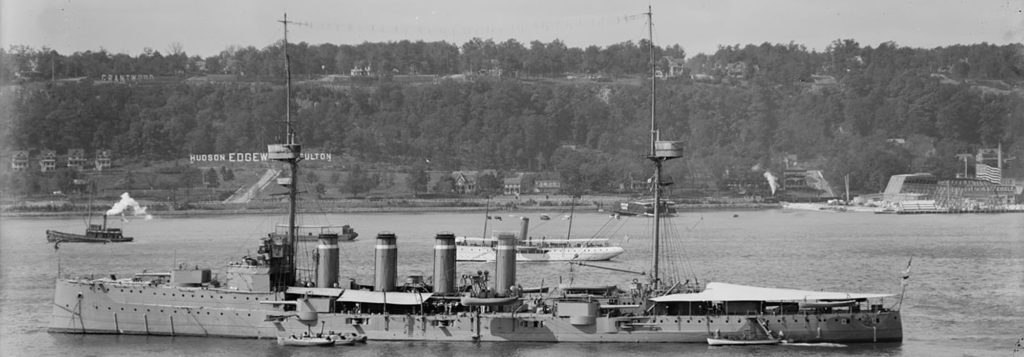
HMS Duke of Edinburgh was in the Mediterranean in 1914, captured freighters in the Red Sea, operated in the Persian Gulf and was recalled in the Grand Fleet in December. Like Black Prince she was modified and took part in the Battle of Jutland and survived. She was later assigned as convoy escort in the Atlantic. In 1918 she was sent to the East India and North America Station, ended her career in reserve at Imingham, 1919, disarmed and sold for BU.
 HMS Warrior
HMS Warrior

HMS Warrior was was laid down on 5 November 1903 at Pembroke, launched on 25 November 1905, completed on 12 December 1906 and assigned to the 5th Cruiser Squadron, Channel Fleetn until 1909. Then she was assigned to the 2nd Cruiser Squadron but on 15 September 1909 she had failing boiler tubes during firing practice, repaired at Devonport. In 1913 she was transferred to the 1st Cruiser Squadron, Mediterranean Fleet. She took part in the hunt for the German battlecruiser Goeben and light cruiser Breslau, ordered to keep pace and shadowing their moves as there was no declaration of war yet. Warrior later took part in the Battle of Antivari in August 1914 and was summoned to defend the Suez Canal against any Istambul-based squadron attack (notably from Yavuz, ex-Goeben) until 6 November. She was ordered to Gibraltar and joined an allied squadron in search for raiders along the African coast until recalled on 19 November after the location of the German East Asia Squadron.
She then joined the Grand Fleet in December 1914, 1st Cruiser Squadron (Rear-Admiral Sir Robert Keith Arbuthnot) and saw little action until the the Battle of Jutland. She sailed in the Grand Fleet vanguard as intended, right flank and when at 5:47 p.m. the flagship HMS Defence spotted the German II Scouting Group, she opened fire, missed and turned to port in pursuit, but narrowly missed the battlecruiser HMS Lion, avoiding a collision. She spotted next the SMS Wiesbaden and closed to engage at 5,500 yards (5,000 m) but was spotted in turn at 6:05 by SMS Derfflinger and four battleships just 8,000 yards (7,300 m) away. HMS Defence was hit and blew up at 6:20, Warrior hit by more than fifteen 28 cmc (11 in), six 15 cm (5.9 in) shells, and saved by the appearance of HMS Warspite. The latter had her steering jammed, stuck in complete circles.
HMS Warrior was badly damaged, in fire and with much flooding. Still the machinery crew (3 survived) manage to keep her running so to withdraw westwards. In the end, dead in thr water, she was towed back home by the seaplane tender HMS Engadine taking aboard 743 of her crew, and abandoned at 8:25 a.m. on 1 June. She foundered. Her wrecj was rediscovered on 8 September 2016 by a team from the Sea War Museum Jutland, completely upside down under 80 meters and last of the 25 ships sunk at Jutland to be located.
 HMS Achilles
HMS Achilles

HMS Achilles was laid down on 22 February 1904 at Elswick, Armstrong Whitworth, launched on 17 June 1905, completed on 22 April 1907 (cost £1,191,103), she joined the 5th Cruiser Squadron in 1907 and visited Russia in 1908. She was assigned to the 2nd Cruiser Squadron in 1909. She was sent with Cochrane to the Shetland Islands on 2 August 1914, assigned to the Grand Fleet later in August.
She missed the Battle of Jutland, being in refit. On the evening of 18 August a deciphered message about the German High Seas Fleet (less the II Battle Squadron) was ordered to leaved Wilhalsmhaven in the night to shell the port of Sunderland on 19 August trigerred a sortie in return of the Grand Fleet. However they diverted frolm their mission in pursuit of the misidentified Harwich Force from Commodore Tyrwhitt, and set course for home. Achilles spotted a U-boat underway. She was scrambled again on 18 October 1916, with three other armoured cruisers, patrolling the northern tip of the North Sea up to Hardangerfjord, Norway.
On 16 March 1917, HMS Achilles and the armed steamer Dundee parrolled the Shetland Islands, and fell on the German auxiliary cruiser Leopard. She evaded boarding and fired two torpedoes, but missed. Dundee hit her stern, and Achilles opened fire in turn, completely obliterated the armed merchant vessel, which sank an hour later with no survivors. HMS Achilles was then transferred to the North America and West Indies Station by August 1917 for convoy escort duties, ending with a refit between February and December 1918. The war being over, she became a stoker’s training ship at Chatham until sold for BU, 9 May 1921.
 HMS Cochrane
HMS Cochrane
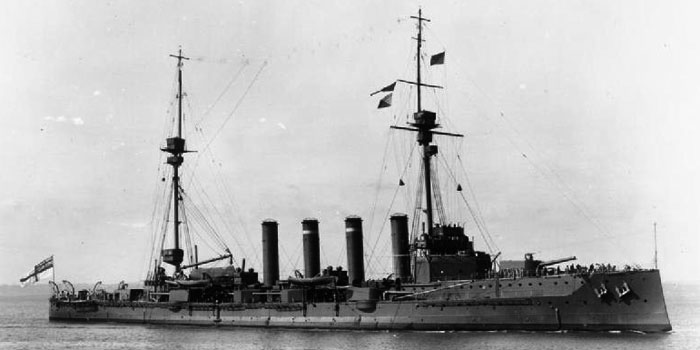
HMS Cochrane (named after the most badass RN captain ever) was laid down on 24 March 1904, launched on 28 May 1905 at Fairfield in Scotland, commissioned on 18 February 1907 and joined the Nore Division of the Home Fleet, 6 March 1907 and the 5th Cruiser Squadron. On 1 April 1909 she was recommissioned with the 2nd Cruiser Squadron until September 1917, escorted the Royal Yacht Medina in 1911–1912. She was sent with Achilles to the Shetland Islands on 2 August 1914 but was reassigned to the Grand Fleet and took part in the Battle of Jutland with Minotaur, Shannon, and Hampshire (Rear-Admiral Herbert Heath) but unlike Warrior, remained unengaged.
She was later transferred to the North America and West Indies Station in Bermuda by November 1917 and joined the 2nd Cruiser Squadron in 1918 for convoy escort, based in Murmansk in March to September 1918 and supported the Allied intervention in the Russian Civil War.On 14 November 1918 she was grounded in the Mersey Estuary and later broke in two, BU in situ in June 1919.
 HMS Natal
HMS Natal
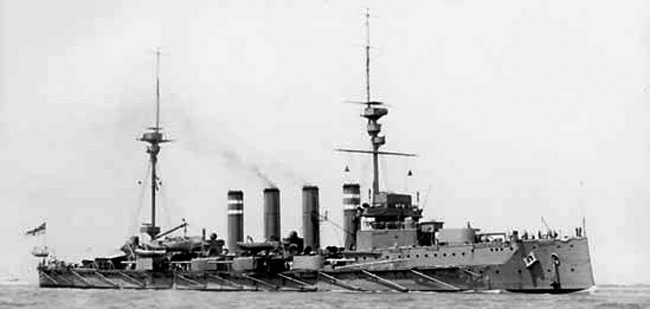
HMS Natal was laid down on 6 January 1904 at Barrow-in-Furness, launched on 30 September 1905, completed on 5 March 1907, paid by funds obtained largely or completely from inhabitants of Colony of Natal in South Aftica. She joined the 5th Cruiser Squadron in 1907, then 2nd Cruiser Squadron in 1909 under Captain F. C. A. Ogilvy and later William Reginald Hall. She escorted the ocean liner RMS Medina in 1911–1912 as royal yacht for King George V to India (for the Delhi Durbar). She carried the body of Whitelaw Reid (U.S. Ambassador to Great Britain) back to New York in December 1912, nicknamed after this “Sea Hearse”.
On 5 June 1913 under Captain John Green, she collided in fog with a fishing trawler. The court of inquiry concluded her 10 knots were too much in such foggy conditions but there was no sanction taken. She served with thee Grand Fleet in 1914 and by January 1915 refitted at Cromarty. She patrolled the North Sea before another refit at Birkenhea on 22 November and by 5 December reassigned to the 2nd Cruiser Squadron, Scapa Flow. On 30 December 1915, she was sailing off Cromarty Firth with her squadron (Captain Eric Back), the latter hosting a film party aboard with wives and children of his officers, and about seven women and three children in attendance when after 15:25 without warning, a series of violent explosions obliterated her after section.
The flooding was immense and so quick she capsized five minutes afterwards, all believing this was a torpedo attack by a sneaking German U-boat, or mine. Later the wreckage revealed an internal explosion, originated in the 9.2-inch shellroom or 3-pdr magazine. The court-martial concluded an internal ammunition explosion due to faulty cordite was a likely cause. But the even killed 390, up to 421. Much of the ship was salvaged afterwards, the remainder blown up in the 1970s to not become a hazard to navigation. She had a memorial to the deceased erected in Durban in 1927, and the Natal Gardens around, opened on 15 July 2000 with a plaque unveiled in June 1992.
Sources
Books
Chesneau, Roger & Kolesnik, Eugene M., eds. (1979) Conway’s all the world fighting ships 1860–1905.
Campbell, John (1998). Jutland: An Analysis of the Fighting. London: Conway Maritime Press.
Corbett, Julian (March 1997). Naval Operations to the Battle of the Falklands. History of the Great War: Based on Official Documents. IWM.
Friedman, Norman (2012). British Cruisers of the Victorian Era. Barnsley, South Yorkshire, UK: Seaforth.
Friedman, Norman (2011). Naval Weapons of World War One. Barnsley, South Yorkshire, UK
McBride, Keith (1990). “The Dukes and the Warriors”. Warship International. XXVII (4). International Naval Research Organization:
Newbolt, Henry (1996). Naval Operations. History of the Great War Based on Official Documents. Vol. IV/V (reprint of the 1928/31 ed.). Battery Press.
Parkes, Oscar (1990). British Battleships (reprint of the 1957 ed.). NIP
Roberts, John (October 1989). “HMS Cochrane”. Warship. Warship. Vol. III. London: Conway Maritime Press.
Silverstone, Paul H. (1984). Directory of the World’s Capital Ships. New York: Hippocrene Books.
Links
dreadnoughtproject.org
navypedia.org
worldwar1.co.uk/
battleships-cruisers.co.uk
The Warrior class on wikipedia
The Duke of Edinburgh class on wikipedia
First published on October 11, 2018.

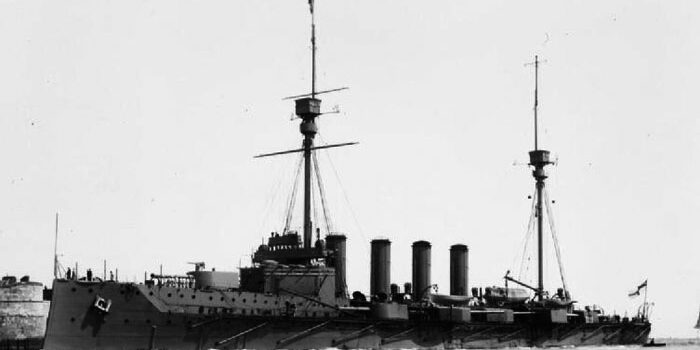

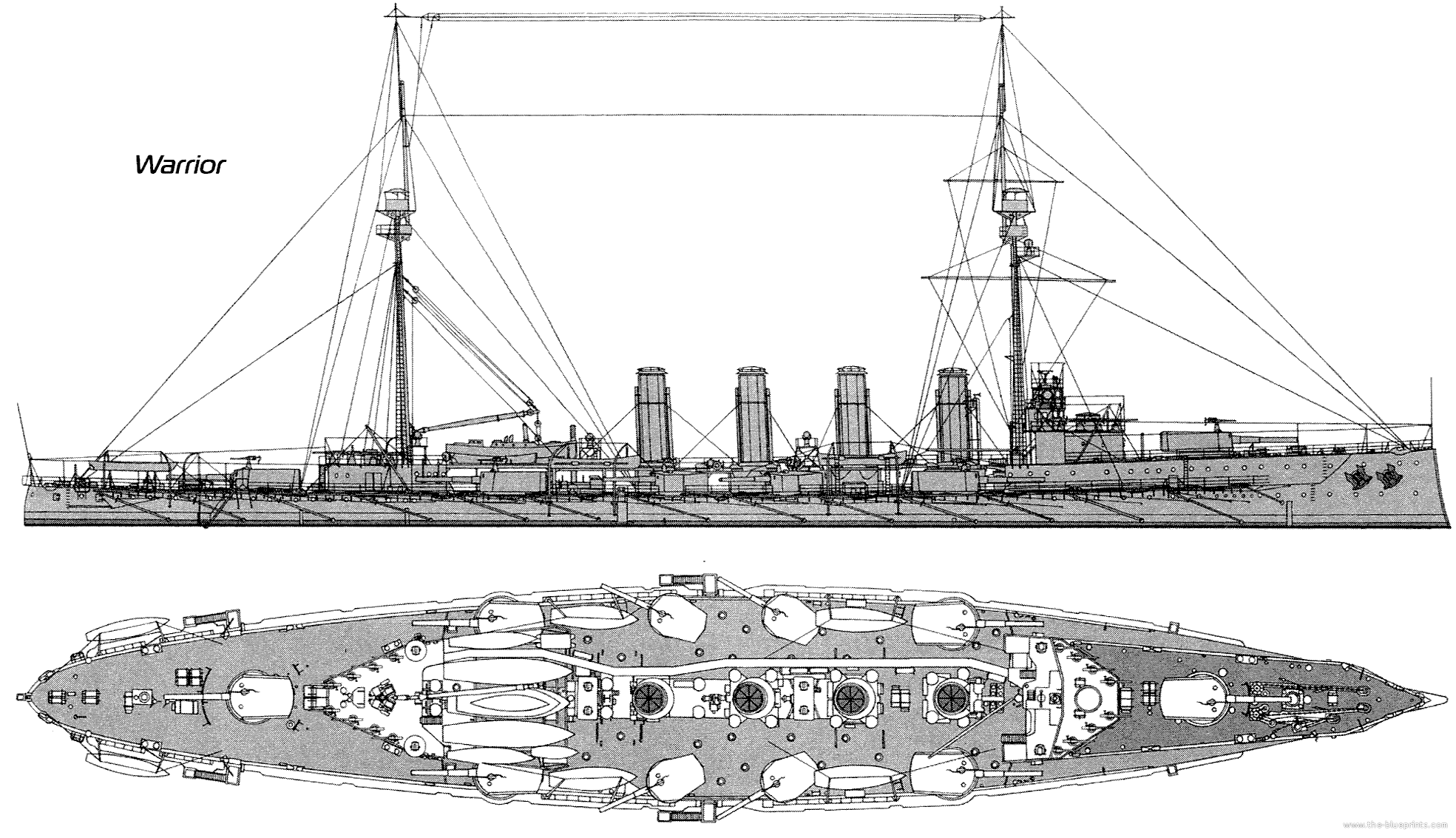
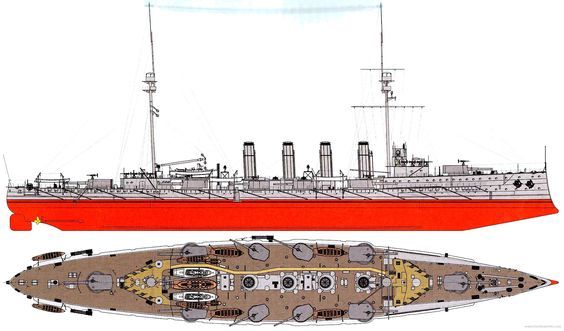
 Latest Facebook Entry -
Latest Facebook Entry -  X(Tweeter) Naval Encyclopedia's deck archive
X(Tweeter) Naval Encyclopedia's deck archive Instagram (@navalencyc)
Instagram (@navalencyc)





 Austrian Navy
Austrian Navy French Navy
French Navy Royal Navy
Royal Navy Armada Espanola
Armada Espanola K.u.K. Kriegsmarine
K.u.K. Kriegsmarine Dansk Marine
Dansk Marine Nautiko Hellenon
Nautiko Hellenon Koninklije Marine 1870
Koninklije Marine 1870 Marinha do Brasil
Marinha do Brasil Osmanlı Donanması
Osmanlı Donanması Marina Do Peru
Marina Do Peru Marinha do Portugal
Marinha do Portugal Regia Marina 1870
Regia Marina 1870 Nihhon Kaigun 1870
Nihhon Kaigun 1870 Preußische Marine 1870
Preußische Marine 1870 Russkiy Flot 1870
Russkiy Flot 1870 Svenska marinen
Svenska marinen Søværnet
Søværnet Union Navy
Union Navy Confederate Navy
Confederate Navy Armada de Argentina
Armada de Argentina Imperial Chinese Navy
Imperial Chinese Navy Marinha do Portugal
Marinha do Portugal Mexico
Mexico Kaiserliche Marine
Kaiserliche Marine 1898 US Navy
1898 US Navy Russkiy Flot
Russkiy Flot French Naval Aviation
French Naval Aviation Russian Naval Aviation
Russian Naval Aviation Sovietskiy Flot
Sovietskiy Flot Royal Canadian Navy
Royal Canadian Navy Royal Australian Navy
Royal Australian Navy RNZN Fleet
RNZN Fleet Chinese Navy 1937
Chinese Navy 1937 Kriegsmarine
Kriegsmarine Chilean Navy
Chilean Navy Danish Navy
Danish Navy Finnish Navy
Finnish Navy Hellenic Navy
Hellenic Navy Polish Navy
Polish Navy Romanian Navy
Romanian Navy Turkish Navy
Turkish Navy Royal Yugoslav Navy
Royal Yugoslav Navy Royal Thai Navy
Royal Thai Navy Minor Navies
Minor Navies Albania
Albania Austria
Austria Belgium
Belgium Columbia
Columbia Costa Rica
Costa Rica Cuba
Cuba Czechoslovakia
Czechoslovakia Dominican Republic
Dominican Republic Haiti
Haiti Hungary
Hungary Honduras
Honduras Estonia
Estonia Iceland
Iceland Eire
Eire Equador
Equador Iran
Iran Iraq
Iraq Latvia
Latvia Liberia
Liberia Lithuania
Lithuania Mandchukuo
Mandchukuo Morocco
Morocco Nicaragua
Nicaragua Persia
Persia San Salvador
San Salvador Sarawak
Sarawak Uruguay
Uruguay Venezuela
Venezuela Zanzibar
Zanzibar Warsaw Pact Navies
Warsaw Pact Navies Bulgaria
Bulgaria Hungary
Hungary

 Bundesmarine
Bundesmarine Dutch Navy
Dutch Navy Hellenic Navy
Hellenic Navy Marina Militare
Marina Militare Taiwanese Navy
Taiwanese Navy Chinese Navy
Chinese Navy Indian Navy
Indian Navy Indonesian Navy
Indonesian Navy JMSDF
JMSDF North Korean Navy
North Korean Navy Philippines Navy
Philippines Navy ROKN
ROKN IDF Navy
IDF Navy Royal New Zealand Navy
Royal New Zealand Navy Egyptian Navy
Egyptian Navy South African Navy
South African Navy

































 RN
RN
 Marine Nationale
Marine Nationale
 Soviet Navy
Soviet Navy
 dbodesign
dbodesign